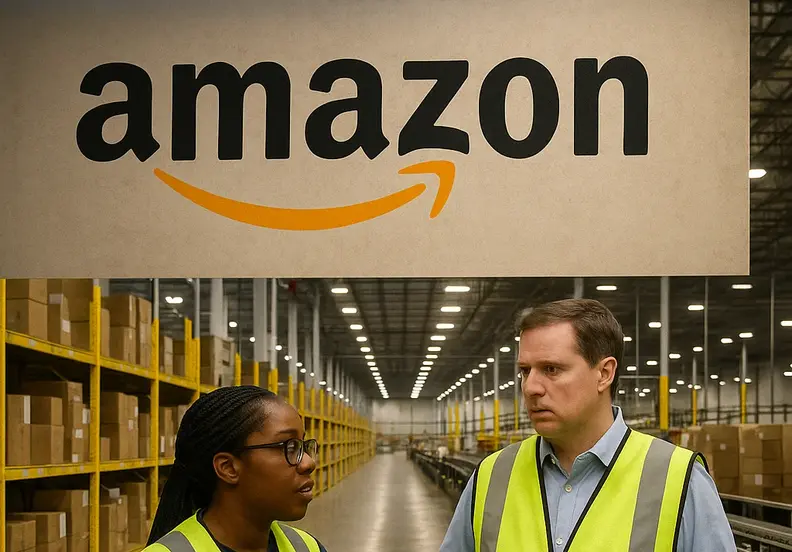In 2021, Amazon announced a new leadership principle: “Strive to be the Earth’s best employer.” This principle states that leaders should work every day to create a safer, more productive, high-performing, and more diverse work environment, leading with empathy and making it easy for others to have fun. However, the timing of this announcement was quite interesting, as it came right when Jeff Bezos stepped down and handed over the reins to Andy Jassy.
Since then, Amazon’s actions have been decidedly anti-employee, creating a stark contradiction between their stated values and their actual workplace policies. The company has sharply increased performance improvement plans, laid off tens of thousands of people, and implemented increasingly hostile policies that seem designed to push employees out rather than support them.
The Performance Improvement Plan Epidemic
Throughout 2022 and 2023, Amazon laid off 27,000 people while simultaneously focusing on improving their participation in the PIP (Performance Improvement Plan) process. They were placing thousands of employees each month into the initial phases of the PIP process, leading to people getting caught up in multiple rounds of layoffs.
Amazon’s internal process called “Focus” puts employees on performance improvement plans if they’re not performing to their standard. At the end of 2023, upwards of 3,300 staffers per month were being placed on such plans. But that wasn’t enough. There’s also a secondary process called “Pivot,” which is the second stage of Amazon’s performance improvement plan. If you’re put on Pivot, you can count the days because your days are numbered.
The company was essentially incentivizing managers to look long and hard at their staff and ask if they had enough people on PIPs in their department. If managers didn’t have enough people on these plans, they would be gently encouraged to start looking more seriously at their performance problems and start managing them out of the business.
The New Performance Review System: Culture as a Weapon
In July 2025, Amazon rolled out a more strict performance review process with culture being a key metric. This new system leans harder into their leadership principles to rate employee performance for all employees, not just those on PIPs. Amazon managers now use a three-tiered system to evaluate how effectively corporate employees demonstrate the company’s core values in their work.
This streamlined rating scale for performance and potential, combined with how employees use the leadership principles, determines an overall score that influences future raises and, of course, performance improvement plans. If you don’t measure up to the leadership principles, you can find yourself on the growing in popularity performance improvement plans.
The company claims this will improve their ability to identify top talent and strengthen their culture, but what it really means is they’re going to try to get the very best people to the top while creating a very cutthroat environment where you’re competing directly with other people for the same pool of compensation and opportunities.
The Pay Structure Overhaul: Rewarding High Performers, Punishing Others
Amazon has also overhauled their compensation model to clearly reward high performers and punish people they deem to be underperformers, with their definition of underperformance expanding drastically. If you’re in the top tier, you can make 100% to 110% of your pay range. If you’re in the bottom tier, you only get 70% of your pay band, down from 80% last year.
This means even people who were decent performers in the past can find themselves being held back from a compensation perspective, in addition to the performance management issues. It’s another data point that raises the question: are they truly trying to be the best employer, or is it something else?
The Middle Management Purge
Andy Jassy has announced plans to whittle down middle management, increase direct reports, make fewer senior hires, and down-level or cut pay for some employees. His plan is to increase the ratio of individual contributors to managers by 15% by the end of March, effectively getting rid of management layers to decrease bureaucracy and move fast.
While this sounds fine in theory, the problem is that if you’re focused on career growth, you now no longer have manager levels that you can move to, and it’s getting much more competitive. Having a successful career at Amazon becomes infinitely harder. What this really means is they want to reduce the total number of people on payroll.
The AI Threat: Openly Admitting Job Elimination
Andy Jassy has sent out an internal memo telling employees to expect cuts to white-collar jobs because of AI. He’s being very blunt about it: “There is going to be a reduction in the workforce over the next few years as we roll out more generative AI and agents. We will need fewer people doing some of the jobs that are being done today and more people doing other types of jobs.”
He’s literally saying he’s going to use generative AI and agents to reduce the workforce. This is point-blank admission that they’re looking to eliminate jobs, and it’s posted on the Amazon website. When you look at all the other things they’re doing—performance appraisals, PIPs, layoffs, reduction of middle management—it all tracks with reducing the workforce and becoming leaner to increase company profits.
The Return-to-Office Mandate: 5 Days a Week
In January 2025, Amazon started requiring their corporate employees to return to the office 5 days a week, starting January 2nd. They said if you’re not going to come back to the office, they’ll accept that as your resignation. This affects 350,000 corporate employees who are expected to come into the office 5 days a week, which could be catastrophic if you were hired remotely.
It doesn’t matter if you were hired remotely in 2022 or 2023. That was the job and the premise of the job you took, and you were well-known to have lived in a certain location that was far away from the job itself because you were working remotely. They don’t care. They’re basically saying that if you don’t show up and work in an office, even if your team isn’t there, if you don’t show up for 5 days a week, then your job is in jeopardy.
The Remote Work Reckoning
It doesn’t matter if you were hired remotely in 2022 or 2023 — the rules are changing. Companies are pulling workers back to the office, even when their teams aren’t there. Show up five days a week, or risk losing your job. The age of guaranteed remote work is ending — adaptability is the new job security.
Find Hybrid & Remote Roles →The Forced Relocation Policy: 30 Days to Decide
Amazon is now forcing thousands of their corporate staff to relocate closer to their teams, often meaning you have to relocate across the country. The worst part is they have 30 days to decide and 60 days to either start the moving process or resign—and here’s the key—without severance.
If you decide you’re not going to move, you have literally 30 days to figure out if you can move, if you’re willing to move for a job that is actively looking to lay people off, actively looking to replace people with AI, actively looking to reduce management headcount, and actively at war with their workforce. They’re telling you that you have 30 days to move, and if you don’t, you’re forced to resign without severance.
This is functionally making people quit. They’re forcing you to eliminate your employment, and they get away with not having to pay severance. This is such a crappy policy that it’s hard to see how any high performer would stick around in this environment.
The Robot Workforce: Replacing Blue-Collar Jobs Too
Amazon now uses over a million robots in their warehouses, and they’re doubling down on this. Amazon warehouses will soon have as many robots as humans. For employees, the robots will save physical labor and repetitive tasks. They’ll probably never call off sick, complain, need to go to the bathroom, or need water breaks.
Amazon is averaging 670 employees per facility, which is the lowest number in 16 years. They have a labor shortage problem in their distribution centers because they can’t keep people. They run people into the ground, and it’s known to be a very toxic workplace. If they can find ways to automate, it solves the problem of high turnover jobs where people are just saying, “Screw you, I’m out of here.”
The Future of Work: A Dystopian Nightmare?
When you look at all these policies together—performance-based layoffs, forced relocations, AI-driven job cuts, return-to-office mandates, and robot replacements—it’s hard to see how Amazon is living up to their promise of being the Earth’s best employer. In fact, it seems like it’s almost like a dystopian nightmare anymore.
You could say that if you’re in the top 5% of the workforce, it’s like the rarified air where they’re really great to work for. But for basically everybody else, it’s hard to see how it’s the best place to work. The question becomes: do these companies actually hate their employees? Because it seems like they’re looking for any way possible to increase friction in their workforces to get people to leave on their own accord.
FAQ Section
Q: Why is Amazon implementing these hostile policies?
A: Amazon is trying to reduce their workforce and increase profitability by any means necessary, including performance-based layoffs, forced relocations, and AI-driven job cuts.
Q: What should Amazon employees do if they’re affected by these policies?
A: Employees should start looking for other opportunities immediately, as Amazon’s policies are designed to push people out rather than support them.
Q: Is this the future of work at all companies?
A: Amazon is often a first-mover in the tech industry, and other companies tend to follow their lead, so these policies could spread to other major corporations.
Q: How can employees protect themselves from these policies?
A: The key is to treat your career like a business, always be prepared for the next move, and don’t rely on corporate loyalty or stability.
The Bottom Line: A Company at War with Its Workforce
Amazon’s workplace policies have become increasingly hostile to employees, creating a stark contradiction between their stated values and their actual actions. From performance-based layoffs to forced relocations and AI-driven job cuts, the company seems to be at war with its own workforce.
The question isn’t whether Amazon is becoming hostile to its workforce—it’s whether this represents the future of work in corporate America. If it is, it’s not a good look, and employees need to start taking proactive steps to protect themselves and their careers.




